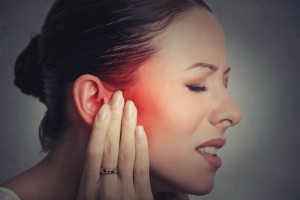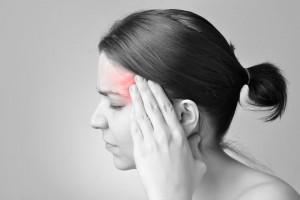- Common headache (cervicogenic headache)
- TMJ pain (jaw pain)
Cervicogenic headaches
What is it?
One of the most common types of headaches that present in the clinic are often referred to as cervicogenic headaches.
Signs and symptoms:
- Constant dull ache, can be present on one or both sides of the head
- Pain may initially begin at the base of the skull and refer to the top of the head, behind the eyes or around the temporal region
- Experience neck pain or stiffness which may be aggravated by neck movements
Causes:
This type of headache is caused by dysfunction in joints, muscles or nerves in the neck. Most often headaches arise from trigger points in the muscles around the neck and shoulders. There may be a past history of trauma (eg whiplash), evidence of poor posture or muscle fatigue. Stress and dehydration can also be a major contribution to the cause of headaches.
Treatment:
Osteopathic techniques include soft tissue techniques, joint mobilisation, stretches and manipulation, all of which may assist in the treatment of headaches. We will often assess surrounding areas such as the jaw, ribs and spine to determine any secondary compensations. We also prescribe exercises to help strengthen the neck and correct posture.
References:Brukner, P., & Khan, K. (2008). Clinical Sports Medicine (3rd ed.). Mc Graw Hill Australia Pty Ltd
Temporomandibular Joint (TMJ) Pain Jaw pain
What is it?
The temporomandibular joint or TMJ is the area where the jawbone connects to the skull. It is located on either side of your head near your ear. It is where the jaw moves up and down, and side to side during chewing and talking for example. TMJ pain or syndrome is where there is a dysfunction associated with the jaw and surrounding facial muscles.

Signs and symptoms:
- Jaw pain
- Ache around your ear
- Locking around the jaw
- Lack of movement of the jaw
- Clicking or popping sounds at the jaw
Causes:
There are a variety of causes of TMJ pain. Some common causes include muscle tightness around the neck and jaw, dental work, headaches, stress, clenching or grinding teeth at night. Other causes may include arthritis or jaw trauma.
Treatment:
Osteopathic involves a combination of soft tissue techniques, joint mobilisation and stretching to treat TMJ conditions. We often screen (examine), then treat if indicated, other areas of the body such as the neck, mid back and tissues at the front of the throat in order to address TMJ pain.References:Oral health care: Temporomandibular joint disorders. (20092015). Retrieved from
http://www.webmd.boots.com/oralhealth/guide/temporomandibularjointdisorderstmjtmd
TMJ disorders. (19982015). TMJ disorders. Retrieved from
http://www.mayoclinic.org/diseasesconditions/tmj/basics/riskfactors/con20043566


